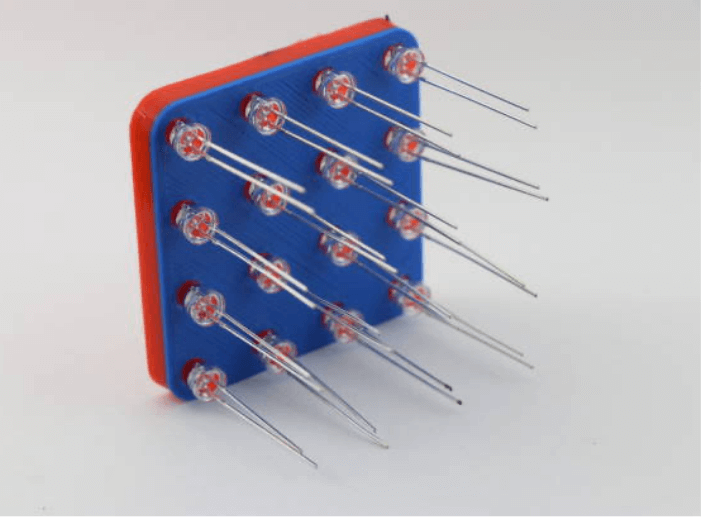
Since the late 1940s, PTFE has grown in popularity over the years because it does not behave like any other polymer. It boasts many properties that are hard to replicate, but it does have its processing limitations, forcing many companies to search for a PTFE alternative.
Over the years, several different polymers have made their way to the marketplace that have similar qualities to PTFE, if not better. If you and your company are looking for the best PTFE alternative to use, you came to the right place. This brief PTFE alternative guide for businesses will cover several options and who you can contact for more information and guidance.
PTFE (Polytetrafluoroethylene) is widely used in coatings to increase abrasion resistance and reduce friction. Unfortunately, this PTFE contains Perfluorooctanoic acid (PFOA), a chemical linked to severe health issues such as testicular cancer, kidney cancer, and thyroid disease. Thankfully, there are several PTFE alternatives, such as FEP, PCTFE, and more.
Although PTFE is excellent in several applications, it lacks specific properties needed for some intensive applications. Despite the fact that it can resist heat, it can only resist up to around 618°F. If PTFE is exposed to heat exceeding that threshold, it will lose its shape and emit mildly toxic fumes.
Even when it reaches its melt temperature, PTFE turns into a gel-type consistency where it becomes soft, but it is not very flexible. Because of this, it cannot be injection molded, which makes it much harder to mass-produce parts. PTFE also has poor abrasion resistance and comes with a hefty price tag since scrap recovery is not possible.
If you need alternatives for CNC swiss screw machining applications, you can use PCTFE. PCTFE provides you with a unique combination of mechanical and physical properties in addition to chemical resistance and near-zero moisture absorptions. This type of material also contains excellent electrical properties and offers no flammability.
Examples of PCTFE applications:
PCTFE has extremely low outgassing when tested per ASTM E-959-90. Outgassing is 0.01% TML, 0.00% CVCM, 0.00% WVR, making this product suitable for flight and aerospace applications.
E-CTFE belongs to partially fluorinated thermoplastics, and it is a copolymer made from chlorotrifluoroethylene and ethylene. This partially crystalline thermoplastic is often used in the chemical industry or other industries where high corrosive resistance is mandatory. This product is also well used in composite construction along with glass-fiber reinforced plastic. It isn’t uncommon to see E-CTFE used for lining steel tanks.
Unique properties of chlorotrifluoroethylene (E-CTFE):
The chemical resistance of chlorotrifluoroethylene is relatively similar to that of PTFE and PVDF. Although its chemical resistance level is identical to PVDF, E-CTFE outperforms PVDF with its chemical resistance in the alkaline range higher than a pH of 10.
In addition, this material has a low permeation coefficient which is helpful in composite construction, and just like PVDF, chlorotrifluoroethylene is insensitive to UV-B and UV-A light. Processing chlorotrifluoroethylene is more critical because its welding temperature has a more restrictive window. This applies to thermoforming because chlorotrifluoroethylene has a reduced elongation at a break between 329°F and 347°F.
Unlike traditional PTFE, Tetrafluorethylene-perpfluoropropylene, also known as FEP, can be melted and processed by conventional thermoplastic processing methods, including extrusion, blow, transfer, and injection. FED is available in tube form, sheets, and rods if needed.
This material is a reasonably soft thermoplastic with wear and tear resistance, creep resistance, and lower tensile strength than other types of engineering plastics. However, it has a low dielectric constant over a wide frequency range.
FEP qualities:
Tetrafluoroethylene-perpfluoropropylene has high transparency with good transmittance of Ultraviolet wavelengths. It also has long-term weather ability and excellent resistance against sunlight, ozone, and weather.
It offers the lowest refractive index of all thermoplastics with low light reflection. This property is similar to water. FEP is not really porous, which makes it useful for several different wire and cable applications. This includes aircraft wire, plenum cable, and other pipe and chemical process equipment.
PFA offers similar properties to FEP, but most consider it to be a premium resin. Many companies prefer PFA when extended services are needed in hostile environments involving thermal, mechanical, and chemical stress. This material offers excellent stress and crack resistance and high melt strength.
Finding the right alternative for your project doesn’t have to be a complicated process; there are a few reputable manufacturers who can point you in the right direction. It is imperative that you work with your vendor early if you plan on using any of these thermoplastics as commercial and application requirements need to be well understood. If you aren’t sure what the best PTFE alternative is best for your needs, you can always ask your manufacturer for more information.
Whether you are looking to find the right PTFE alternative to make electrical components or parts for the medical field, there is a polymer designed to meet your specification needs. At Severna, we can assist you with your part design with the right thermoplastic.
We can even carry your project through the production and quality assurance process. If you need help with your next project, contact us now! Our team is prepared to answer any questions or concerns you have.